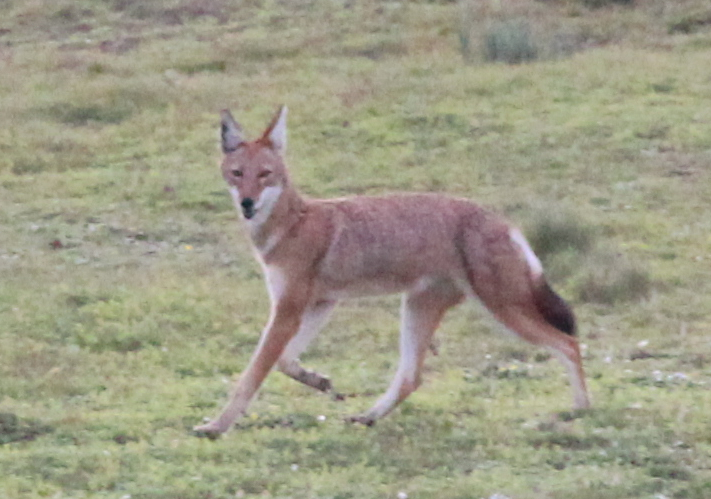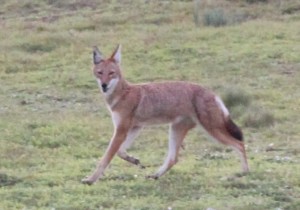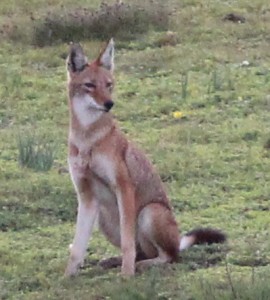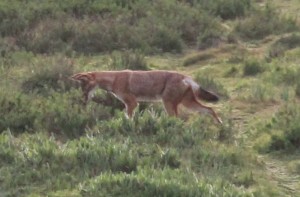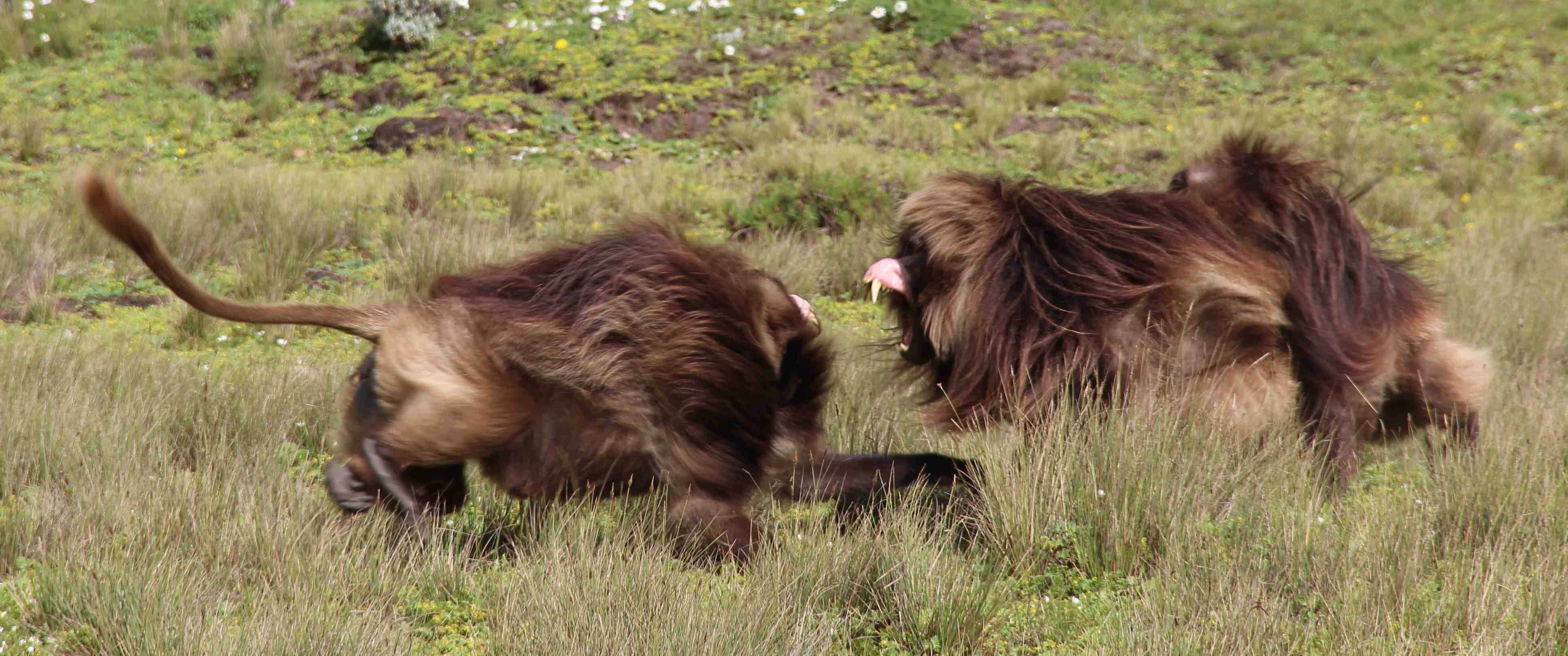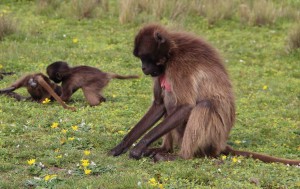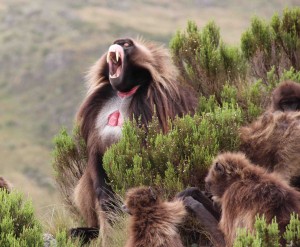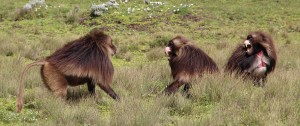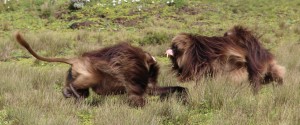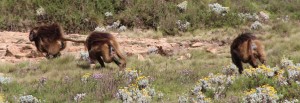23 June 2012
On Saturday, it was time to leave Guassa for the next leg of my journey: Gombe National Park, Tanzania. After breakfast (pancakes with canned peaches and molasses) and packing my bags, I sat with Peter and Tyler in the kitchen tent, asking them about the names of monkeys in my photos, and wondering if the driver would really show up. The project doesn’t have a car in Guassa, so if the car we had hired in Addis failed to turn up, my only option would be to take a walk to the road and take a bus, or try hitching a ride, either of which would mean I would miss my flight to Dar-es-Salaam, and would also miss the two subsequent flights I needed to take to get to Kigoma, before taking the boat to Gombe.

Around 10:30 am, the car arrived. The driver had left Addis at 5:00 am to get to Guassa on time.
The drive down was basically terrifying. We rolled into Taitu at 3:18 pm. We left Guassa around 10:45 so that’s 5.5 hours, not bad time. The driver drove typical African style: as fast as possible, on whichever side of the road seemed better paved or reduced curves, honking to alert livestock, cars and pedestrians that he was coming through. The drive was almost entirely downhill, the first few hours especially steep. The road wound in hairpin turns, often with a steep cliff falling away to the side – usually the passenger side. My side.
For most of the way on the gravel road (the first third or so of the drive), there were no barriers at all on the edge of the road to keep a car from driving off into oblivion. On the paved road, several different kinds of barriers existed: stone and concrete rectangles built like castle fortifications, thick concrete posts, metal stakes, and the sort of metal ribbon we are used to in America. And almost every single one of these barriers showed signs of having been run into at high speed. We passed one truck with a double trailer dangling off a bridge, and several other trucks in various states of damage along the side of the road, rocks under the tires to keep them from rolling further, and more rocks and tree branches placed around the disabled truck as a helpful barrier and warning sign to oncoming traffic.

We passed through Eucalyptus plantations growing on the steep hills. These exotic trees are planted widely in Africa, and valued because they grow quickly, and also sprout new shoots from the stump when you cut the tree down. The many small trunks growing from older stumps seem to be the main source of the scaffolding used in the many new buildings going up in Addis: spindly trunks of
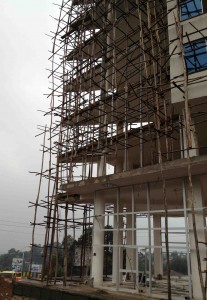
young trees roughly lashed together to provide a rickety framework for new multi-story concrete office and apartment buildings. We passed trucks belching black exhaust and diesel fumes with bundles of Eucalyptus poles tied to the truck bed, the leafy treetops extending far over the cab of the truck. Donkeys carried loads of smaller Eucalyptus branches, maybe for use in building the framework for wattle and daub houses.
In Addis, I took a long hot shower, my first since leaving the city on Monday. It was just too cold to bathe in Guassa. Then I had dinner. I ordered Special Tibs again. On previous nights, the mound of spicy meat and sauce and two rolls of injera seemed like more food than I could possibly manage, and I ended dinner stuffed and defeated before finishing it all. But now with a Guassa stomach, the meal looked disappointingly small. But with the addition of some extra njera the tibs proved highly satisfying.

